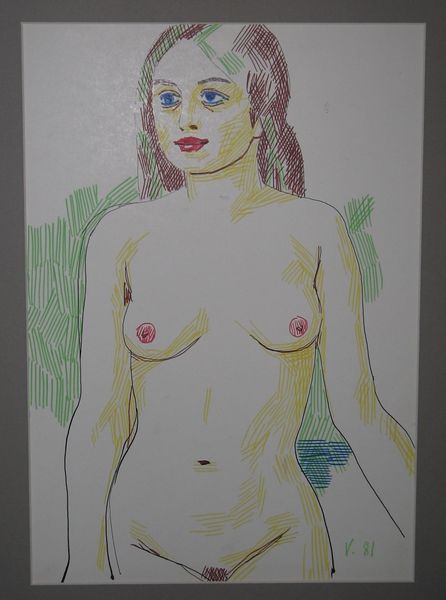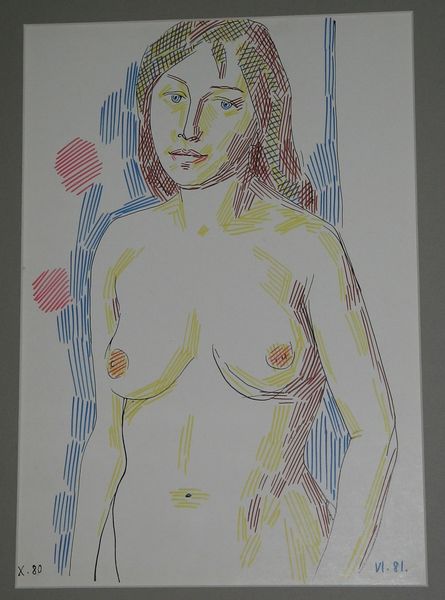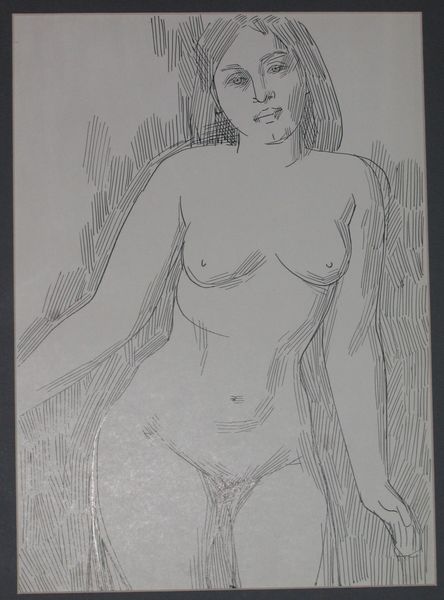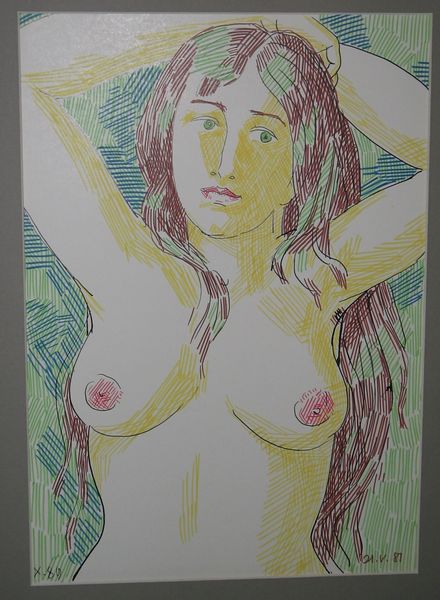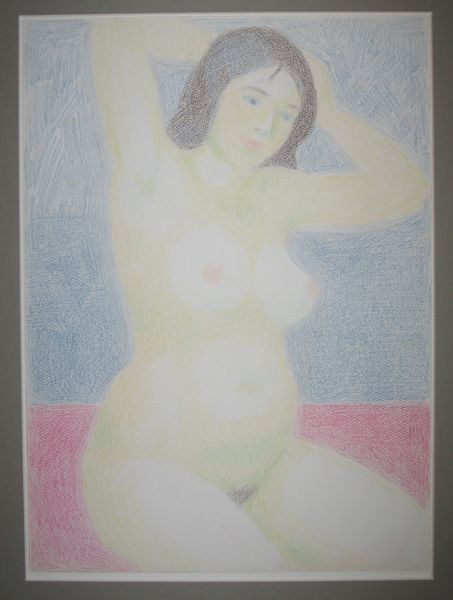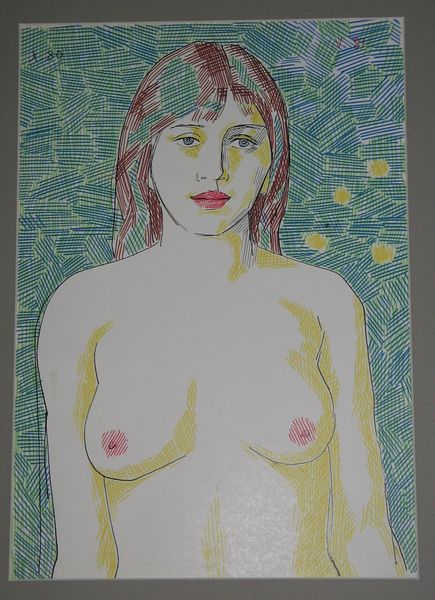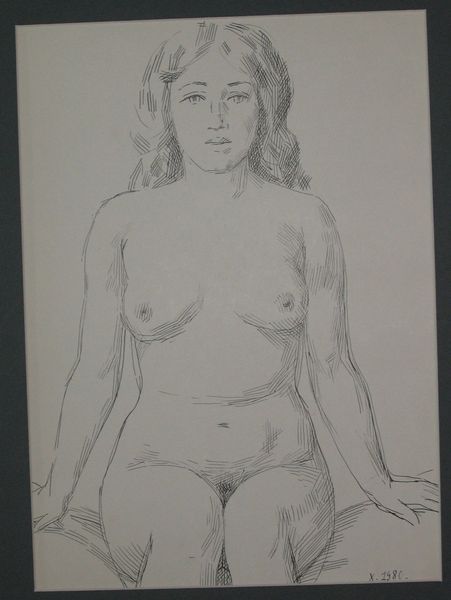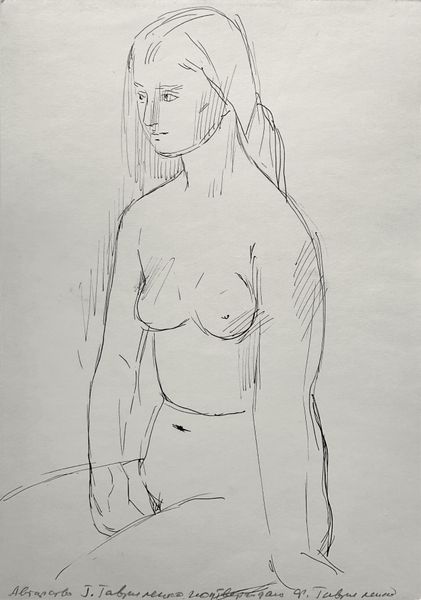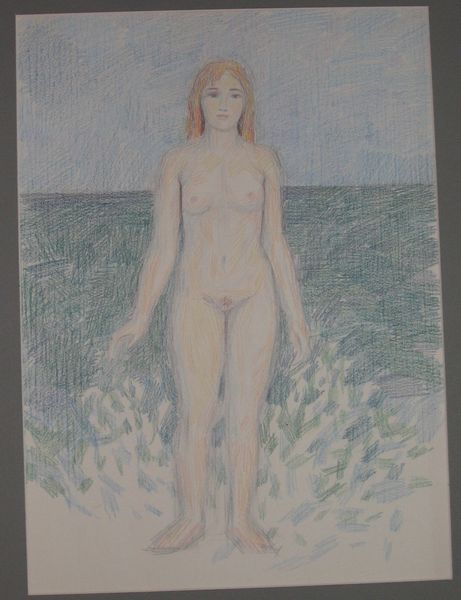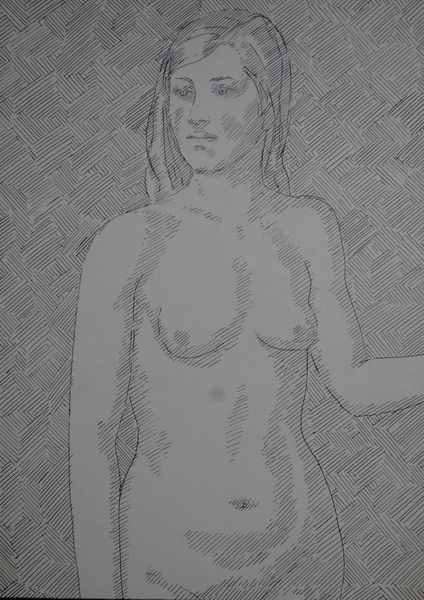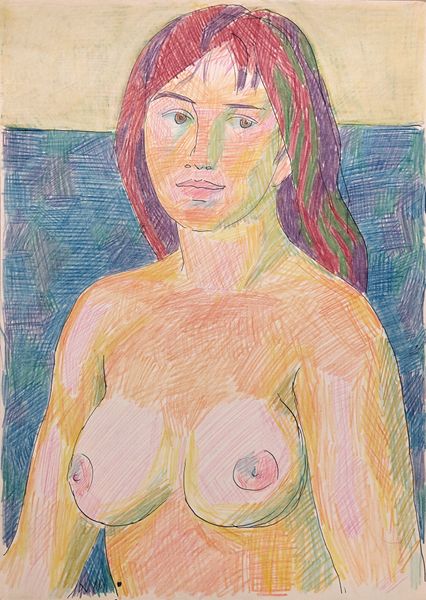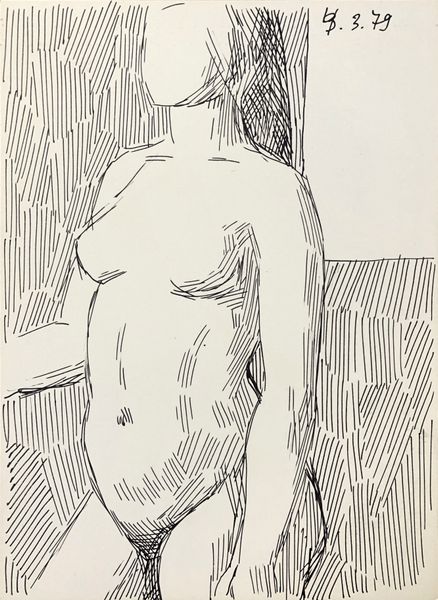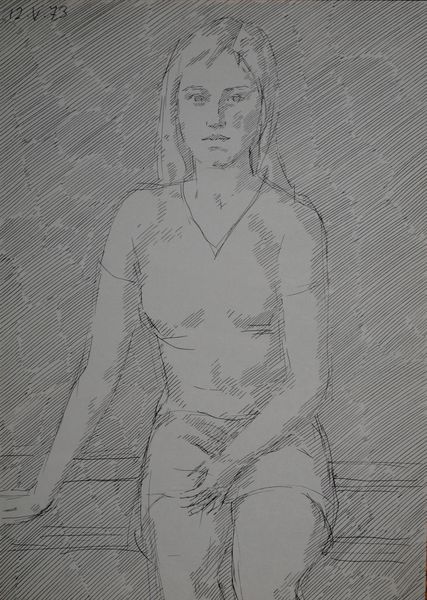
drawing
drawing
figuration
line
nude
Copyright: Hryhorii Havrylenko,Fair Use
Curator: My first impression? There's something about the vulnerability in this drawing—a directness that disarms. It’s called "Nude," created in 1981 by Hryhorii Havrylenko. Editor: Absolutely. This piece sits within a larger conversation about representation and the gaze. Havrylenko, though likely working under constraints at the time, engages with the female nude in a way that prompts us to question power dynamics. Curator: Power dynamics indeed! Though, I think there’s a kind of innocent energy—I wouldn't quite leap to an activist conclusion about oppression or exploitation. It's the simple honesty of line and color that speaks loudest, isn’t it? Blue, red, yellow. Editor: The simplicity you mention is strategic, almost deceptively so. Line drawings, especially those focusing on the nude, historically catered to or reinforced specific ideals. The limited palette almost suggests a deconstruction—breaking the figure down to essential visual codes and forcing us to think beyond traditional art canons. How are we seeing this figure outside what we expect from Soviet-era art? Curator: I’m so glad you raised the Soviet era because there are definitely undercurrents here of quiet defiance. A private moment rendered simply. Editor: Exactly. While seemingly just an aesthetic exercise, the choice of subject and the act of drawing such a figure become interventions—asserting individuality and autonomy. Remember, even artistic decisions are deeply implicated in social and political contexts. The body, especially the female body, became a site for pushing boundaries in times of ideological conformity. Curator: What gets me most is how little information we actually get, in a way! This almost naive quality is fascinating. The subject's almost severe expression hints at thoughts that we don't hear, and aren't invited to assume. She seems quietly in control of her image. Editor: And that silence becomes potent. "Nude" transforms into a document of defiance. Looking at it now, we understand not only its formal artistic qualities but also the hidden politics of representing women in a certain period of history. Curator: What do we call this subversion, though? Quiet resistance or a bold outcry for expression? I love art for never answering. Editor: Maybe the real victory lies precisely in the asking.
Comments
No comments
Be the first to comment and join the conversation on the ultimate creative platform.
